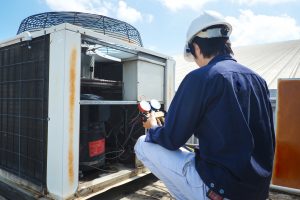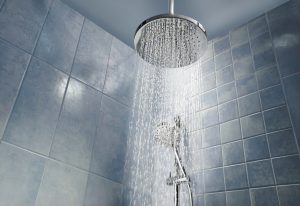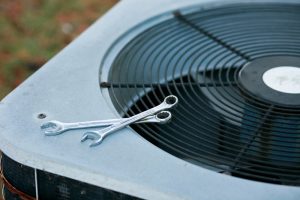How do you conserve water in your home?
Water conservation is very vital in our daily activities. Living without water is like digging an early grave, that’s why it’s of great importance to always conserve water whenever possible.
Remember that water use in the home varies. According to the University of Nebraska, a person uses an average of 70 to 100 gallons of water per day.
The main users of water in the home are the toilet, shower/bath, and washing machine.
The faucets and dishwashers equally consumes a lot of water. That’s why adopting effective water-conservation practices for these areas can provide utmost benefit to the family.
Conserving water in our homes come with a token of benefits. It saves your money for the extra water bill that you would have paid before reducing water consumption, and it’s good for this kind of economy.
Many countries over the years have once or severally encountered the tragedy of drought. Bear in mind that drought never gives a signal that it’s coming; it can attack at any time, thus bringing us to the several effective ways of conserving water to greatly escape the tragedy of drought.
Water conservation starts from your own home; therefore, when everyone at their respective homes conserves water, drought will never be part of our problems as a country to solve.
Here are the 13 effective ways to conserve water in your home:
- Recycle water whenever possible
When using the shower, use a bucket to collect the water that comes out first before the heater heats up. Use this water in watering your flowers or trees outside or at your garden.

Source: Kmutt
Also, when doing laundry using hands, avoid disposing of water now and then, you can reuse by washing more clothes with the initial water collected then rinse with clean water. Also, reuse water for laundry to clear the dust outside during summertime.
When using a washing machine, ensure it is full of clothes. Recycle water used for washing fruits and vegetables in the kitchen to water your plants at the garden.
- Turn off the bathroom faucet
Always turn off the bathroom tap while brushing your teeth, don’t just let water flow while you are brushing your teeth.
It might seem too little, but the amount of time you are brushing your teeth is comparable to losing more than one liter of water. Running water should be conserved.
Use a pool of water to rinse your shaving tool than to rinse on running water, and this helps conserve water.
Use one towel for a week when taking a shower, stop using a clean towel every time you take a shower, this reduces washing towels everyday, thus saving water.
- Water your plants in the early morning and late evening

In the early morning hours before sunrise, the air is cool, so when you sprinkle water to your plants, trees, and flowers, the water soaks the soil.
But when sprinkled when it’s dry the water evaporates thus consuming a lot of water. Always collect rainfall water so that you can use in watering your plants. When watering your trees, use drip irrigation.
- Fix any leaks
Check and fix any leaks as quickly as possible when you realize leaks in your house, from the faucets to the water pipes and even the shower and the flash.
In most cases, you may realize that the flash in the toilet or the pipe below the sink leaks very little amount of water, which is a lot of water by the end of the day. This leaking water is saved by fixing the leakages on time.
These two areas need to be checked regularly to avoid unnecessary wastage of water. You can also install a modern toilet flash which enables you to regulate the amount of water when flushing your toilet.
- Turn off kitchen faucet while washing dishes

It’s always good to turn off the tap while hand washing the dishes. Fill the sink with water then scrub the dishes, then rinse them all at once.
Avoid scrubbing the dishes while water is flowing, and this helps in conserving a lot of water in the long run.
- Install dual kitchen faucets
By installing two kitchen sinks for washing dishes, it will greatly help in saving water. Fill the first faucet with water and soap where you will begin by washing your dishes.
Fill the second faucet with clean water to rinse the dishes, and this will help in saving water wasted by hand washing dishes while water is running.
- Wash your car from the car wash

Washing a car at home uses a lot of clean water. At the car wash, they use recycled water to do any cleaning; it’s way better than washing from home where you are going to consume a lot of treated water, which is wastage in the expense of recycled water at the car wash.
You can also take your fluffy carpet to be washed at the car wash since it will consume a lot of water when washed at home.
- Use less electricity
Use buckets and hand sprinkler to water your plants. Using an electric pump means pumping a lot of water to sprinkle your plants.
Collect rainwater using tanks during heavy rainy seasons to use later in watering plants — to avoid using electricity in pumping water to irrigate plants.
Your plants also get fresh water with no chemicals, unlike piped water, which has treatment.
You can also choose to water your plants using hands. It’s tiresome, but a small amount of water is used than using an automatic sprinkler, this is a good way to conserve water at home.
- Invest in a washing machine

Doing laundry by hand requires a lot of clean water.
On the other hand, washing using a washing machine conserves a lot of water since it uses a very little amount of water and its services are the best. Or you can rather buy a small dishwasher.
Modern dishwashers conserve a lot of water because you are going to load all the dishes inside and rinse them at a go. Apart from conserving water, it also saves energy and detergents.
- Short showers
When taking a shower, always minimize your time in the bathroom to reduce spending a lot of water running. Of course, if you are going to shower for longer periods, a lot of water is going to be wasted.
While scrubbing yourself turn off the shower to avoid unused water getting wasted.
Turn on the shower after scrubbing yourself when you’re ready to get rinsed, and this will also help you soap yourself well. Conserving water from the bathroom means saving gallons of water.
- Choose dishwasher over hand washing

Using hands to wash dishes means you’re going to use a lot of water to wash dishes because it involves water running from the tap as you wash and rinse the dishes.
Investing in a dishwasher will help you use small amounts of water in washing your dishes, ensure the loads are full.
The dishwasher uses half the water you would have used by hand washing the dishes, and that means conserving a lot of water.
- The low flow of water
It’s good to use low flowing water. Using slow-flowing water in the bathroom will give you enough time to scrub yourself and rinse yourself and still use a very small amount of water than you would have used with first running water.
In the kitchen, while washing dishes use slow-flowing water while rinsing your dishes, it will help you conserve a lot of water because a very small amount is used.
Even when washing hands or when brushing your teeth, always use slow-flowing water, by doing these you will conserve gallons of water than you never know.
- Regularly check your water bills
Keeping an eye on your water meter will always help you track your water usage every month. If there’s an increase in water usage, your water meter will tell you that, and it will help you get control of that, peradventure you’ve been using water carelessly.
It also helps you pinpoint if there are any leakages. If the bill runs too high and maybe your households spend most of their day at work, it means there must be a leakage.
It’s also wise to keep track of your water daily by frequently or daily checking the water bill to avoid eventualities, and this will help you conserve gallons of water that would have gone to waste through heavy leakages.
Conclusion
There you have it, the little things you can do in your home to conserve water all year round. Even though your city or home may have a shortage of water supply, conserving water means you’re reducing energy use and saving money.
This post first appeared on https://blog.antaplumbing.com
 You’re not the only one to ask that question. Lot’s of homeowners are under the impression that an AC tune-up is just a bonus service that technicians sell to get an extra buck, but nothing could be further from the truth. The tough part is, nobody who isn’t in the industry knows what exactly takes place during your scheduled AC tune-up. That’s why we’re your professional air conditioning service in Clifton, NJ, that can give you the inside scoop on an AC checkup.
You’re not the only one to ask that question. Lot’s of homeowners are under the impression that an AC tune-up is just a bonus service that technicians sell to get an extra buck, but nothing could be further from the truth. The tough part is, nobody who isn’t in the industry knows what exactly takes place during your scheduled AC tune-up. That’s why we’re your professional air conditioning service in Clifton, NJ, that can give you the inside scoop on an AC checkup. Isn’t water just wet? Can it be hard? How about soft and fuzzy?
Isn’t water just wet? Can it be hard? How about soft and fuzzy? 


 Sink garbage disposals are so common in residential homes today that people have a difficult time imagining what life would be like without them. Before disposals became common parts of kitchens, food waste needed to be scraped off plates and into a composting bucket which was then taken to the trash. This was not only a time-consuming job, but it also put more waste into landfills. Garbage disposals allow a large amount of food waste to instead go into the municipal sewer treatment system without larger pieces of organic waste clogging up the drains.
Sink garbage disposals are so common in residential homes today that people have a difficult time imagining what life would be like without them. Before disposals became common parts of kitchens, food waste needed to be scraped off plates and into a composting bucket which was then taken to the trash. This was not only a time-consuming job, but it also put more waste into landfills. Garbage disposals allow a large amount of food waste to instead go into the municipal sewer treatment system without larger pieces of organic waste clogging up the drains. Nobody likes a leak. From pipes, to drains, to toilets, leaks can spell disaster for a homeowner. An air conditioner is no exception. Water leaking from an AC can mean warped floorboards, mold, and a slew of other problems. If you’re noticing any water leaks coming from your air conditioner, it’s not a bad idea to contact a technician for fast
Nobody likes a leak. From pipes, to drains, to toilets, leaks can spell disaster for a homeowner. An air conditioner is no exception. Water leaking from an AC can mean warped floorboards, mold, and a slew of other problems. If you’re noticing any water leaks coming from your air conditioner, it’s not a bad idea to contact a technician for fast  Is it the garbage can? Did someone go to the bathroom? Maybe it’s the litter box. Either way, something smells, and of course, you want to get to the bottom of it. But, have you ever considered that this unpleasant scent could be coming from your drainpipe? That’s right: problems with drains or sewer lines can end up leading to quite an awful scent!
Is it the garbage can? Did someone go to the bathroom? Maybe it’s the litter box. Either way, something smells, and of course, you want to get to the bottom of it. But, have you ever considered that this unpleasant scent could be coming from your drainpipe? That’s right: problems with drains or sewer lines can end up leading to quite an awful scent!







